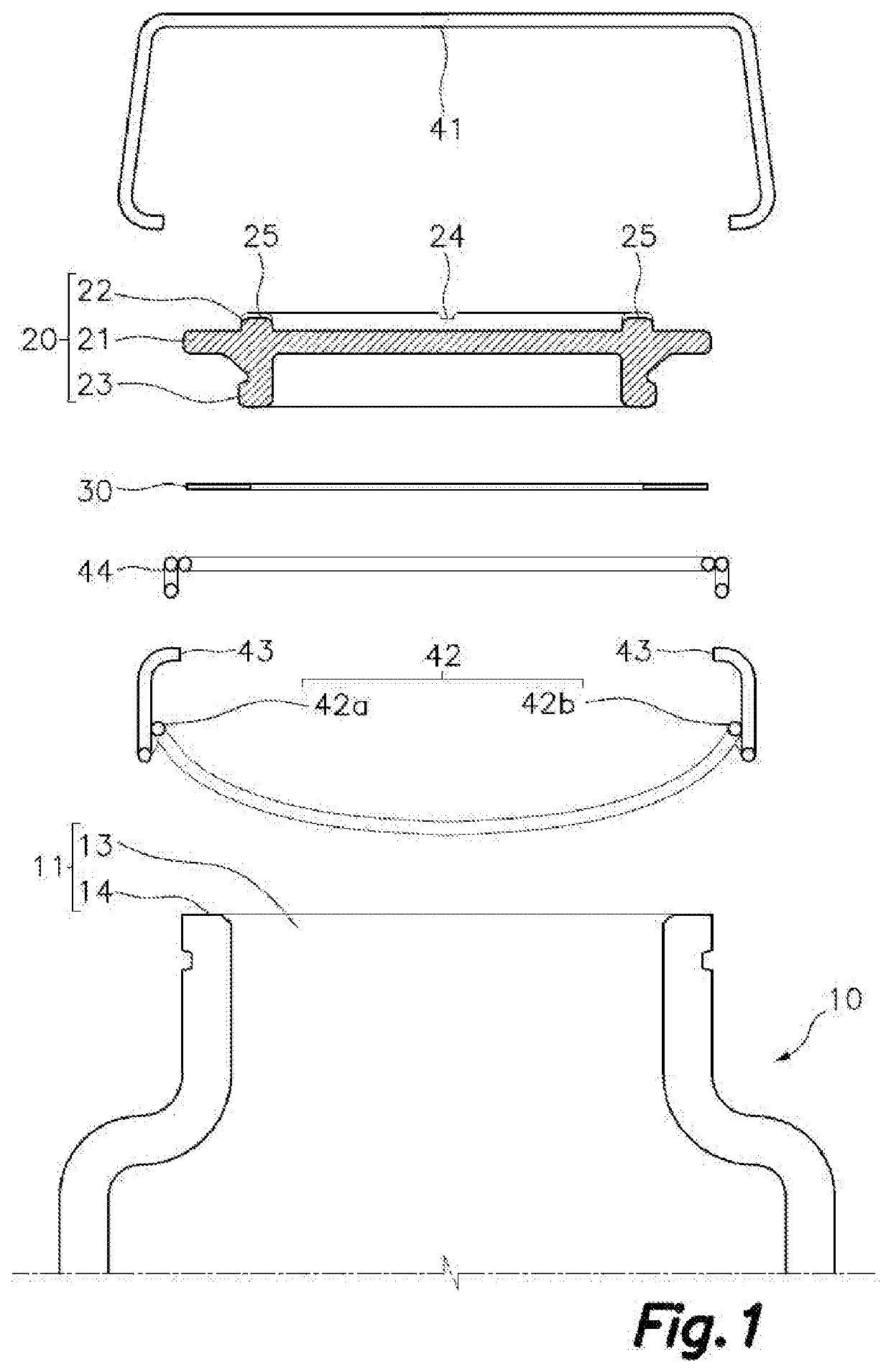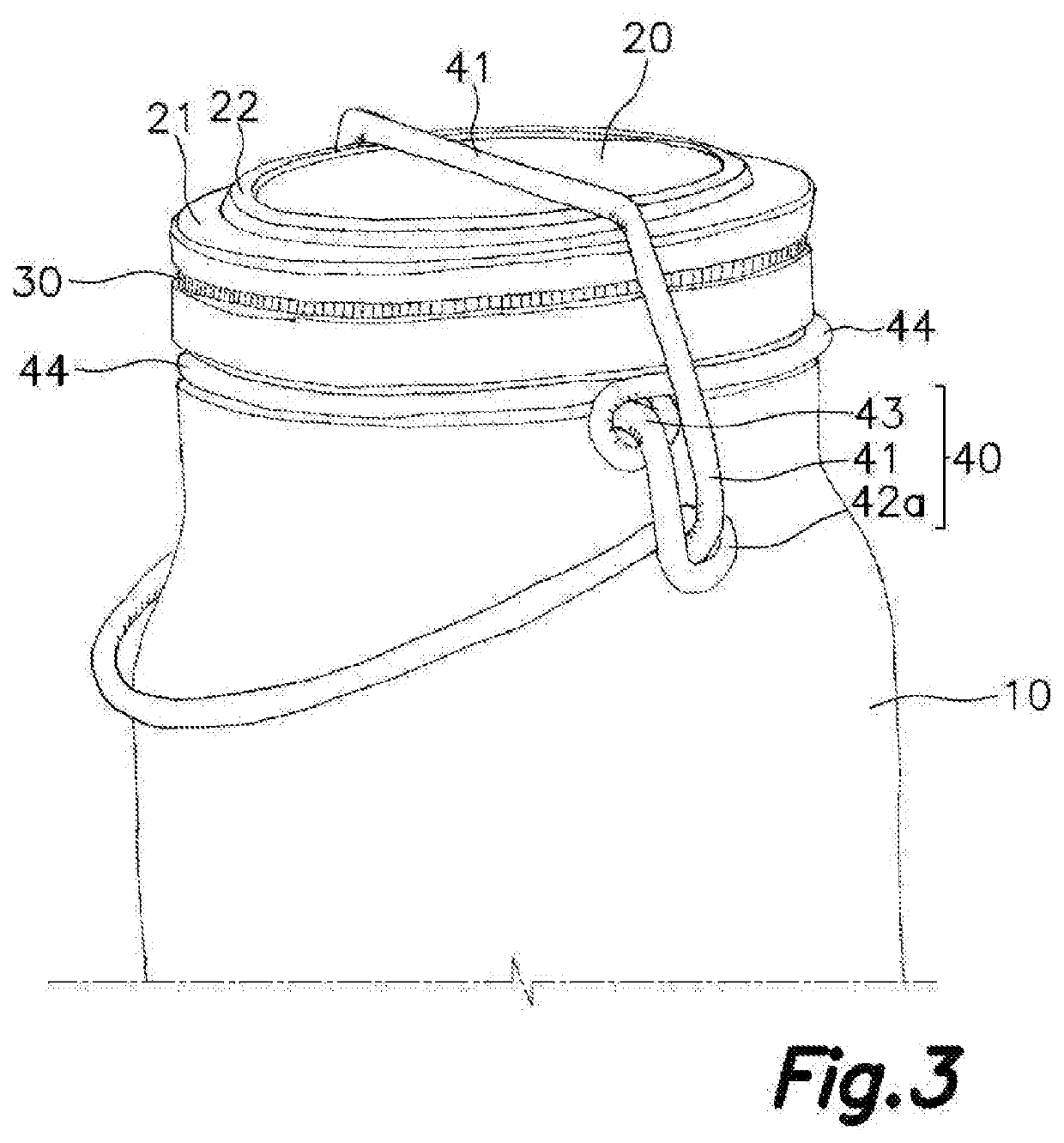Container with a hermetic closure
a technology of hermetic closure and container, which is applied in the direction of closures, packaging, and latching mechanisms, can solve the problems of cumbersome lids, less thickness, and less stress on the lid, so as to reduce stress, reduce stress, and reduce the effect of lid stress
- Summary
- Abstract
- Description
- Claims
- Application Information
AI Technical Summary
Benefits of technology
Problems solved by technology
Method used
Image
Examples
Embodiment Construction
[0065]The attached drawings show illustrative non-limiting embodiments of the present invention.
[0066]FIGS. 1, 2, and 3 show a container with a hermetic closure comprising a receptacle 10 which, in this example, is proposed to be a glass receptacle 10. Said receptacle 10 is provided with a cylindrical mouth 11 to which there is coupled a lid 20, also preferably made of glass, with a sealing ring 30 interposed to assure a leak-tight sealing between the mouth 11 and the lid 20.
[0067]The mouth 11 includes a receptacle opening 13 and an annular mouth surface 14 surrounding said receptacle opening 13.
[0068]It will be understood that although the preferred embodiment is made of glass, both the receptacle 10 and the lid 20 can be made of other materials, such as ceramic, for example, or the use of plastic is even optionally contemplated.
[0069]The lid 20 is a flat lid formed by a flat circular glass about 5 mm thick, defining a front side oriented upwards and a back side oriented downwards ...
PUM
 Login to View More
Login to View More Abstract
Description
Claims
Application Information
 Login to View More
Login to View More - R&D
- Intellectual Property
- Life Sciences
- Materials
- Tech Scout
- Unparalleled Data Quality
- Higher Quality Content
- 60% Fewer Hallucinations
Browse by: Latest US Patents, China's latest patents, Technical Efficacy Thesaurus, Application Domain, Technology Topic, Popular Technical Reports.
© 2025 PatSnap. All rights reserved.Legal|Privacy policy|Modern Slavery Act Transparency Statement|Sitemap|About US| Contact US: help@patsnap.com



